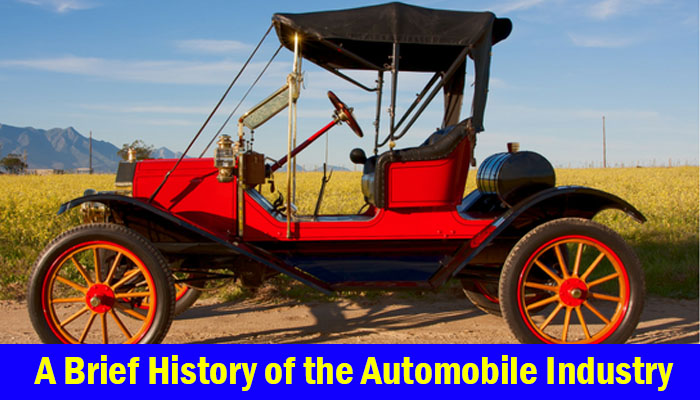A Brief History of the Automobile Industry
The early history of the automobile is incredibly interesting. The industry began as a small shop in the mid-19th century. It was the backbone of a new consumer goods society and was responsible for one in every six jobs in the United States. By the 1920s, automobile production was at an all-time high, and it became the lifeblood of the petroleum and steel industries, and the most important consumer of many other industrial products.
Initially, the automobile was a steam-powered vehicle that moved people and goods. Later, the first gasoline-powered cars were developed in Germany and France. Other European manufacturers joined them, and then the American industry followed. By the 1950s, the industry was so large that it had a profound effect on society and the economy. Throughout the twentieth century, the automobile became an essential part of life and contributed to economic growth throughout the world.
The automobile industry was responsible for much of the production of war materials and goods for the United States during the First World War. It also provided parts for military vehicles during World War II, making the country’s military efforts a success. According to the World War II Department of Defense, during that time, the automotive industry produced over 75 items necessary for the war effort. Together, these items made up nearly a fifth of all wartime production.
The automotive industry evolved from its humble beginnings in the late nineteenth century. While it was originally a steam-powered vehicle, gas-powered vehicles were later developed in France and Germany. Aside from manufacturing automobiles, the automobile industry included repair shops, motor fuel filling stations, and other related industries. In 1909, the company employed seventeen hundred workers and produced less than 1,000 cars a year. The next century saw more automobiles and trucks being manufactured for the war effort.
The automobile was originally steam-powered. Later, the first gasoline-powered cars were produced in Germany. Then, it was a matter of time before gasoline-powered cars appeared on the road. As a result, the development of the automobile was greatly accelerated. Although the first gas-powered vehicle was the first to be manufactured, the technology was a major step towards the modern city. It helped make transportation simpler and more efficient, thereby creating a vibrant and thriving economy.
The automobile industry is now a global industry. Its innovations have transformed the way we live our lives. From constructing streets and highways to creating roads, the automobile has changed the landscape of the world. In the 20th century, it is no longer just about cars and trucking. The automotive industry is a global business that affects every aspect of our lives. The growth and development of the automobile industry have led to more prosperity than any other sector in history.
The automobile industry is not just about cars and trucks. In the 19th century, there was a variety of products that were not related to the automobile. While early steam-powered road vehicles were produced, gas-powered vehicles came along a century later. The first gasoline-powered road vehicle was a popular item for many people in the world, and the second was a luxury car. It became popular in the 19th century in Europe and the United States. A Brief History of the Automobile Industry
The automobile industry is a vast industry with hundreds of different types of products. From automobile manufacturing and marketing to car repair shops and motor fueling stations, the automobile has transformed our world. It has changed our lives in ways we never dreamed of. While automobiles have been the backbone of our economy for centuries, the technology behind them has become an integral part of our lives. The modern city is an important part of the modern automobile industry. A Brief History of the Automobile Industry
Historically, the automobile industry was dominated by the Midwest. While the automobile was once the main mode of transportation for many people, today it is a vital part of society. Nevertheless, the auto industry faced its share of challenges in the 1970s and 1980s. By the end of the twentieth century, the automotive industry was growing rapidly in all four of these regions. The growth of the automobile industry was unprecedented in history and influenced the lives of millions of people.
